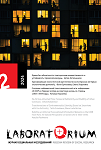BUILDING AN INFORMAL TRANSNATIONAL INFORMATION NETWORK ON THE USSR FROM PARIS: AN OUTSIDE PERSPECTIVE ON SOVIET LIFE IN 1923-1939
BUILDING AN INFORMAL TRANSNATIONAL INFORMATION NETWORK ON THE USSR FROM PARIS: AN OUTSIDE PERSPECTIVE ON SOVIET LIFE IN 1923-1939
Author(s): Natalia PashkeevaSubject(s): Communication studies, Diplomatic history, Political history, Theory of Communication, Interwar Period (1920 - 1939), ICT Information and Communications Technologies
Published by: Центр независимых социологических исследований (ЦНСИ)
Keywords: Information Networks; International Organizations; Transnationalism; American YMCA; Exiles; Émigrés; Gray Literature; Soviet Union and the West;
Summary/Abstract: The article presents findings on the informal network exchanging and disseminating information about socioeconomic and political trends in the USSR in 1923–1939. This network, formed through interactions between the workers of the American Young Men’s Christian Association (YMCA) and Soviet émigrés in Paris, was supported by American and British academics, public figures, and religious actors. Their goal was to improve public information and raise awareness of repressions in the USSR. The central argument is that this network emerged spontaneously to meet the demand from religious and public actors for regular, objective, and reliable information amid polarized Western views on Soviet experiment in building socialism and communism in the 1920s–1930s. It primarily distributed translations into English of Soviet press articles, official documents, laws, propaganda, and literature. Personal accounts from émigrés or travelers to the USSR were taken into account, but rarely cited in the disseminated materials. An exception highlighted is the 1932–1933 famine, which was omitted from the official Soviet documentation and press. The article reconstructs the information network through the individuals’ professional and personal connections, examining covered topics, methods of information presentation, key communication channels, and obstacles. It briefly discusses the spontaneous involvement of the network’s workers in attempts to influence political and diplomatic decisions, including the restoration of diplomatic and trade relations with the USSR by the British government in 1929 and the US administration in 1933.
Journal: Laboratorium. Журнал социальных исследований
- Issue Year: 16/2024
- Issue No: 2
- Page Range: 57-94
- Page Count: 38
- Language: English

